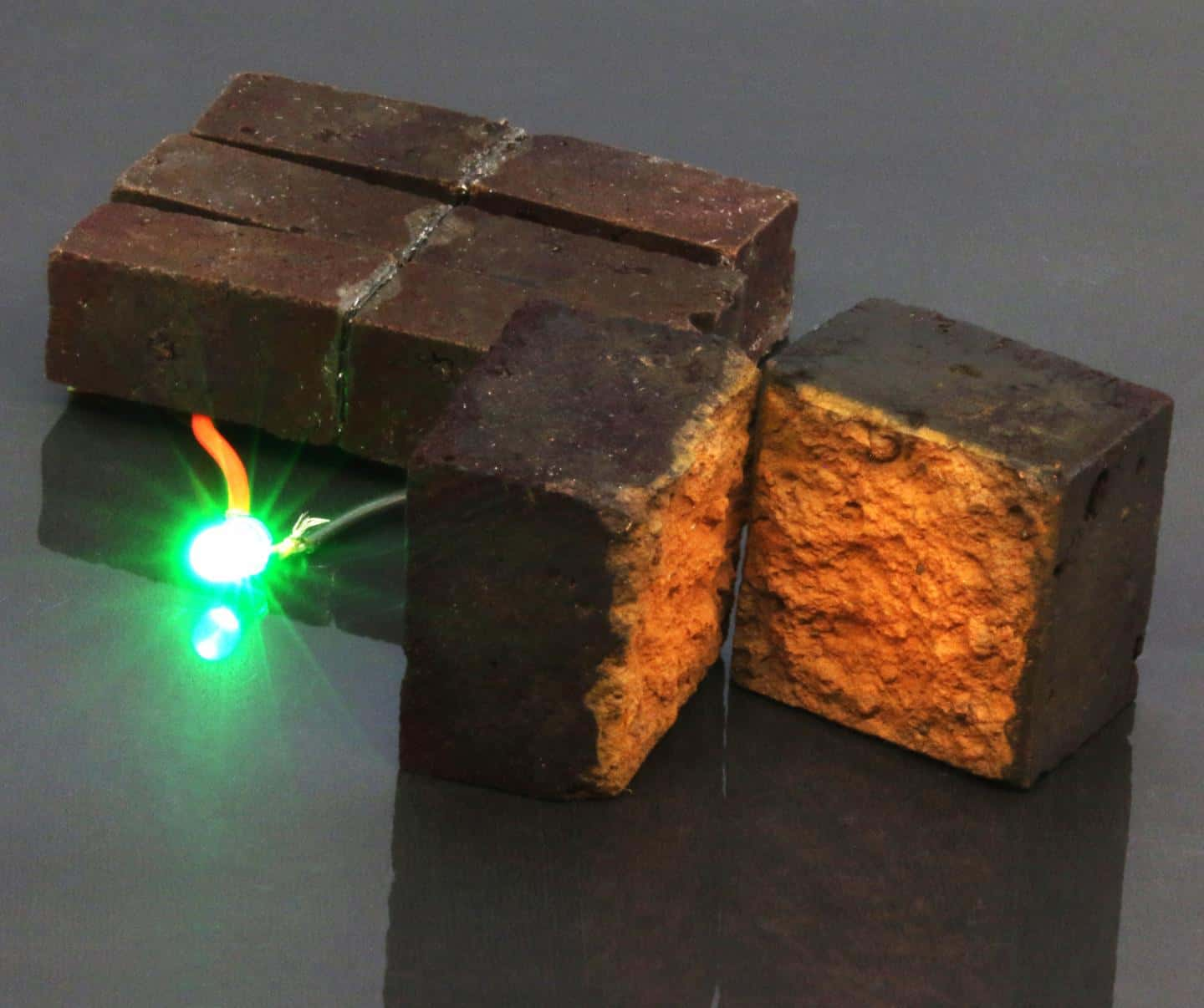Electricity storing smart brick. Sounds new and interesting? Ever wondered if your house or a building can become warehouses for electricity? All the worrying about power-cut and inverters vanished? It is now possible. Scientists at Washington University have created a way to store electricity inside those ordinary red bricks or fired bricks, which we use in the construction of almost all kinds of structures- houses, buildings, bridges, etc.
What is a smart electricity storing brick?
The new ‘electricity storing smart brick’ can store electricity like batteries or supercapacitors. The bricks can provide power to our electrical appliances, and if used in construction, the structures can become powerhouses for lights, fans, appliances, etc.
In original terms, the smart bricks are supercapacitors rather than batteries. Because supercapacitors store electricity in a solid matter as a static charge. But batteries garner electricity through chemical reactions.
Supercapacitors charge and discharge far faster than batteries, but to date, they can only hold a small fraction of the energy. Scientists in different parts of the world are finding ways to increase the energy density and the charging speed of supercapacitors.

What is the scope of these smart bricks?
The energy density of the first electricity storing smart bricks is just 1% of that of lithium-ion batteries, enough to charge small lights. According to D’Arcy, one of the scientists involved in the invention of the smart brick, the energy density of the bricks can be increased ten times by adding metal oxides and similar compounds to store more charge in the brick. This supposedly can lead to the commercial proposition of the bricks.
According to the inventors, walls made from these smart bricks could store a substantial amount of energy for high watt appliances, for longer durations and can be charged many times. They hope that their electricity storing smart bricks eventually match the energy density of a lithium-ion battery and become a low-cost alternative. By connecting bricks with solar cells, emergency lighting is possible for up to 5 hours.
Everywhere, scientists are finding ways of creating effective renewable energy in view of climate emergency, environmental degradation, and sustainable development. Another advantage of supercapacitors is that we can charge and recharge them many more times than batteries before losing their ability to store electricity. We can recycle the power bricks 10,000 times before draining out.
The cost of lithium-ion batteries has increased by 90% since 2010, and hydropower schemes are effective on the mountain terrain. That is why storing enormous amounts of electricity is a challenge, prompting a search for alternatives.
How does a smart brick work?
The fired red bricks are age-old technology for the universal construction of structures. These bricks absorb and store the sun’s heat. Because buildings can take up large amounts of space, scientists wondered if it can also store electricity and thus began experimenting for the same. The scientists describe the working of the electricity storing smart bricks in a proof-of-concept paper in the journal ‘Nature Communications‘.
The new technology uses the porous nature of fired red bricks by filling the pores with nanofibers of a conducting plastic that can store charge. The color of the fired red bricks is important because the red pigment, which is iron-oxide or rust, is essential for triggering the polymerization reaction.
The scientists developed small prototypes of the smart bricks through chemical vapors to react with the red iron oxides in the bricks and form a network of plastic nanofibres. They used a unique plastic, called PEDOT, as a very good electricity conductor.
The experiment turned the fired red bricks into dark blue. The charge stored by the first bricks is tiny to create a shock when touched. But a wall of connected bricks, with an insulating coating using epoxy resin, allowed the scientists to demonstrate that the smart bricks even work underwater.

The team is presently working on increasing the energy-storing capacity of the bricks, which would help to power mobile devices. The energy density of the smart bricks is two orders of magnitude lower than a lithium-ion battery.
We use lithium-ion in mobile phones, laptops, and similar gadgets. Three scientists, M Stanley Whittingham, John B. Goodenough, and Akira Yoshino, who developed lithium-ion batteries, won a Nobel prize in 2019.
Woah! This is extremely informative.